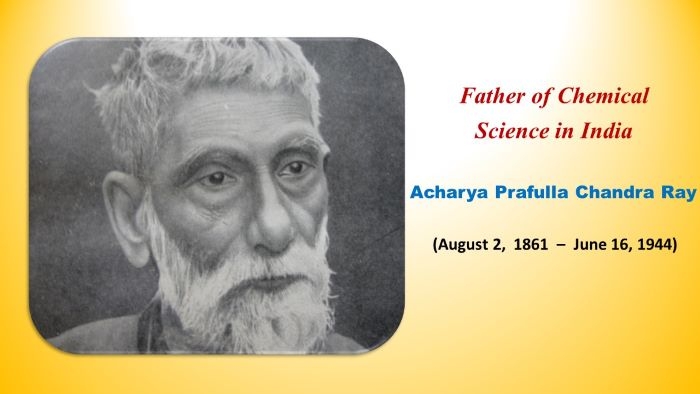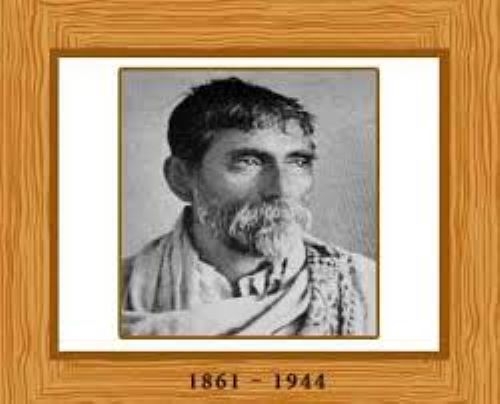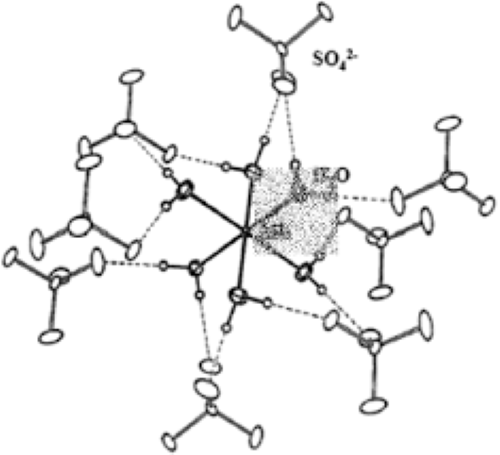Tribute to 'father of chemical science in India' Acharya Prafulla Chandra Ray on 158th birth Anniversary!
Total Views |
New Delhi, August 2: In the begining of the second half of the 19th century, when there was a dawn of Indian national freedom movement, there was also the dawn of modern science in Inida. On August 2, 1861, born a 'philosopher scientist' named Acharya Prafulla Chandra Ray, who paved the way for india's scientific progress which was equally essential as freedom.

today is the 158th birth anniversary of legendary Indian scientist, philanthropist, educationist, historian and industrialist; father of chemical science in India, Acharya Prafulla Chandra Ray. He was one of the few dignitaries of India to be named as Acharya!
Prafulla Chandra Ray chowdhary was born in the village of Raruli-Katipara in the Jessore District of the then Bengal Presidency. He was fortunate to be born in a ‘wealthy’ family, both in terms of monetary wealth and knowledge. In 1866, Prafulla began his education in the village school run by his father, and studied there until he was nine. A severe attack of dysentery during his school life proved to be a blessing in disguise as it allowed him to read much more widely than what would have been possible within the constraints of school curricula. During the time of rest, he made extensive reading on science, history, geography, Bengali literature; Greek, Latin, French and Sanskrit languages.

After the successful completion of his school, he got admitted to Vidyasagar College founded by the classic Indian philosopher Pt. Ishwar Chandra Vidyasagar. He had been under a continued influence of Brahmo Samaj. Simultaneously while studying literature in the college, Ray attended physics and chemistry lectures as an external student at the presidency college. Soon captivated by experimental science, Ray decided to make chemistry his career, as he recognised that his country's future would greatly depend on her progress in science. His passion for experimentation led him to set up a miniature chemistry laboratory at a classmate's lodgings and reproducing some of Pedler's demonstrations. He passed the FA (First Arts) exam in 1881 with a second division, and was admitted to the BA (B-course) degree of the University of Calcutta as a chemistry student, with a view towards pursuing higher studies in the field of chemistry. After winning a scholarship through an all-India competitive examination, he enrolled as a BSc. student at the University of Edinburgh, UK.
After obtaining his BSc degree, Ray embarked on his doctoral studies. Although his thesis advisor Crum Brown was an organic chemist, Prafulla was drawn towards inorganic chemistry at a time when research in the field appeared to be making limited progress compared to organic chemistry. Following an extensive review of available inorganic chemistry literature, Ray decided to explore the specific natures of structural affinities in double salts as the subject of his thesis. Within this area, Ray chose to research metal double sulfates.

Ray was awarded the Hope Prize which allowed him to work on his research for a further period of one year after completion of his doctorate. His thesis title was "Conjugated Sulphates of the Copper-magnesium Group: A Study of Isomorphous Mixtures and Molecular Combinations". While a student he was elected Vice-President of the University of Edinburgh Chemical Society in 1888.
Around 1895 Prafulla Chandra started his work in the field of discovering nitrite chemistry which turned out to be extremely effective. In 1896, he published a paper on preparation of a new stable chemical compound: mercurous nitrite. This work made way for a large number of investigative papers on nitrites and hyponitrites of different metals, and on nitrites of ammonia and organic amines. Prafulla Chandra, in 1896, noticed the formation of a yellow crystalline solid with the reaction of mercury and dilute nitric acid.
3 Hg + 8 HNO3 → 3 Hg(NO3)2 + 2 NO + 4 H2O
This result was first published in the Journal of Asiatic Society of Bengal. That was forthwith noticed by Nature magazine on May 28, 1896.
Ammonium nitrite synthesis in pure form through double displacement ammonium between chloride and silver nitrite is one of the notable contributions of P C Ray. He proved that the pure ammonium nitrite is indeed stable by bring to pass a lot of experiments and explained thet it can be sublimed even at 60 °C without decomposition.[14]
NH4Cl + AgNO2 → NH4NO2 + AgC
Ray prepared a lot of such compounds by double displacement. He had written 107 papers in all branches of Chemistry by 1920. Prafulla started a new Indian School of Chemistry in 1924. He was president of the 1920 session of the Indian Science Congress.
Ray contributed articles in Bengali to many monthly magazines, particularly on scientific topics. He published the first volume of his autobiography Life and Experience of a Bengali Chemist in 1932, and dedicated it to the youth of India. The second volume of this work was issued in 1935.
In 1902, he published the first volume of A History of Hindu Chemistry from the Earliest Times to the Middle of Sixteenth Century.[17] The second volume was published in 1909.[18] The work was result of many years' search through ancient Sanskrit manuscripts and through works of orientalists.
The philanthropy of Acharya Prafulla Chandra Ray is evident from an example. When severe flood hit Northern Bengal region, Prafulla Chandra organised Bengal Relief Committee, which collected nearly 2.5 million rupees in cash and kind and distributed it in the affected area in an organised manner. He donated money regularly towards welfare of Sadharan Brahmo Samaj, Brahmo Girls' School and Indian Chemical Society.[6] In 1922, he donated money to establish Nagarjuna Prize to be awarded for the best work in chemistry.[6] In 1937, another award, named after Ashutosh Mukherjee, to be awarded for the best work in zoology or botany, was established from his donation.
Acharya remained a bachelor throughout his life, dedicating his whole life for the blossoming of science and humanity!